Naqsh-e Rostam: Spectacular Tomb Complex With Rock Reliefs From Elamite To Sasanian Times
A. Sutherland - AncientPages.com - An incredible complex of tombs and artworks known as Naqsh-e Rostam ("Picture of Rostam"), or Necropolis, is located outside of the city of Shiraz and only a few kilometers northwest of Persepolis - the capital of the ancient Achaemenid Empire - in central Iran.
Naqsh-e-Rostam. Image credit: Iran Chamber Society
Naqsh-e Rostam monument is a perpendicular wall of rock with four similar tombs, cut considerably from the bottom of the valley.
The rock art below the tombs with sculptures from Elamite, Achaemenid, and Sassanid periods on mountains and rock is one of the unique and most beautiful examples of stone masonry of the historical and ancient period.
The Sasanian carvings are believed to represent the mythical hero Rostam (or Rustam), who fought legendary monsters such as the dragon and the White Demon and was described in the great Persian Epic of the Kings, 'Shahname,' completed in 1010 CE.
A rock relief at Naqsh-e Rostam, depicting the triumph of Shapur I over the Roman Emperor Valerian, and Philip the Arabian. Image credit: Iran Chamber Society
The four impressive rock tombs - cut at a considerable height from the bottom of the valley - are all elaborately carved into the side of a stone mountainside. The perfection of the building's right angles testifies to the skill of the builders.
The tombs belong to Achaemenid kings and are locally known as the 'Persian crosses, due to the shape of the facades of the graves.
Seven oversized and rich ornamented reliefs dedicated to the Achaemenid kings belong to the early first millennium BC.
Darius 2's tomb, Naqsh-e-Rostam. Darius The Great's Inscription at Naqshe Rostam, Iran; right: Darius, source
At the center of each cross is an entrance to each tomb, which opens into a small chamber where the king lay in a coffin. The horizontal beam of each tomb's facades is believed to be a replica of the palace's entrance at Persepolis.
Naqsh-e Rostam was already an important place when king Darius I the Great (522-486 BC) ordered his monumental tomb to be carved into the cliff.
Later, similar royal rock tombs were added, and they are believed to belong to Darius' son and successor Xerxes (486-465), his son Artaxerxes I Makrocheir (465-424), and his grandson Darius II Nothus (423-404), whose original name was Ochus. He was often called Nothus ('Bastard') because he was the son of King Artaxerxes I and a concubine from Babylon.
Left: Relief of Xerxes in Naqsh-e Rustam; Right: Artaxerxes III (Artaxšaçā) - Emperor of Achaemenid Persia. Image via Wikiwand
There is also a fifth tomb, but it's unfinished. Archaeologists are almost sure that the tombs were closed after the burial. After Alexander the Great had overthrown the Achaemenid Empire, the doors were smashed, and the graves were looted.
Today Naqsh-e Rostam is an abandoned ancient site, visited only by a small group of tourists.
Written by – A. Sutherland - AncientPages.com Senior Staff Writer
Copyright © AncientPages.com All rights reserved. This material may not be published, broadcast, rewritten or redistributed in whole or part without the express written permission of AncientPages.com
Expand for referencesMore From Ancient Pages
-
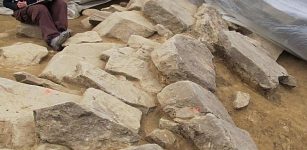 Zyndram’s Hill: Oldest-Known Stone Wall – A Masterpiece Of Architecture Found In Poland
Civilizations | Sep 15, 2015
Zyndram’s Hill: Oldest-Known Stone Wall – A Masterpiece Of Architecture Found In Poland
Civilizations | Sep 15, 2015 -
 On This Day In History: Ruler Of Palenque Yohl Ik’nal Was Crowned – On Dec 23, 583
News | Dec 23, 2016
On This Day In History: Ruler Of Palenque Yohl Ik’nal Was Crowned – On Dec 23, 583
News | Dec 23, 2016 -
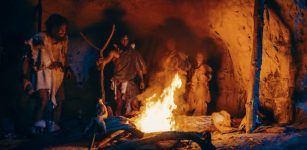 Early Humans In Europe Were Making Fires At Least 250,000 Years Ago – New Study
Archaeology | May 18, 2023
Early Humans In Europe Were Making Fires At Least 250,000 Years Ago – New Study
Archaeology | May 18, 2023 -
 Remarkable discovery: Ancient coffins reveal centuries-old secrets of French nobility
News | Sep 1, 2015
Remarkable discovery: Ancient coffins reveal centuries-old secrets of French nobility
News | Sep 1, 2015 -
 ‘Reforms of Shang Yang’ – Location Of Ancient Yueyang – Confirmed
Archaeology | Jan 25, 2016
‘Reforms of Shang Yang’ – Location Of Ancient Yueyang – Confirmed
Archaeology | Jan 25, 2016 -
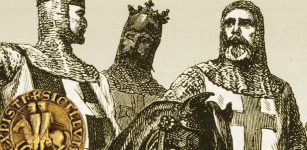 Knights Templar – Among The Most Wealthy And Powerful Of The Western Christian Military Orders
Featured Stories | Jun 11, 2020
Knights Templar – Among The Most Wealthy And Powerful Of The Western Christian Military Orders
Featured Stories | Jun 11, 2020 -
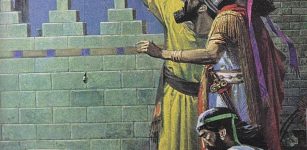 Babylonian Astronomers Used Geometry To Track Jupiter – 1,400 Years Before Europeans
Archaeology | Jan 28, 2016
Babylonian Astronomers Used Geometry To Track Jupiter – 1,400 Years Before Europeans
Archaeology | Jan 28, 2016 -
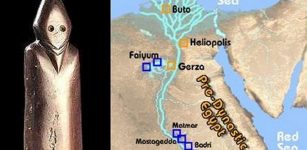 Mysterious Figurine Of Mythical Individual Dates Back To Egypt’s Naqada Culture 4400–3000 BC
Featured Stories | Sep 25, 2016
Mysterious Figurine Of Mythical Individual Dates Back To Egypt’s Naqada Culture 4400–3000 BC
Featured Stories | Sep 25, 2016 -
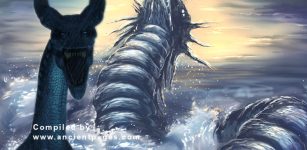 Trentren And Caicai: The Battling Serpents Of Chilote Mythology
Featured Stories | Jul 10, 2022
Trentren And Caicai: The Battling Serpents Of Chilote Mythology
Featured Stories | Jul 10, 2022 -
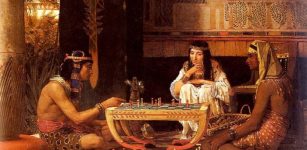 Ancient Egyptians Had A Different Definition Of ‘Foreigners’
Ancient History Facts | Apr 14, 2018
Ancient Egyptians Had A Different Definition Of ‘Foreigners’
Ancient History Facts | Apr 14, 2018 -
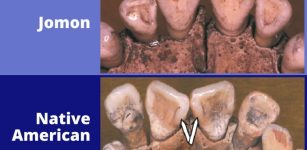 Peopling the Americas: Not “Out of Japan” – Popular Theory Debunked
Archaeology | Oct 13, 2021
Peopling the Americas: Not “Out of Japan” – Popular Theory Debunked
Archaeology | Oct 13, 2021 -
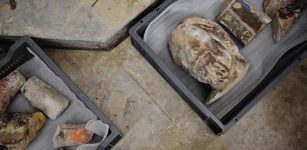 Surprising Discovery Of Ancient Sarcophagus At Paris’ Notre Dame Cathedral
Archaeology | Mar 16, 2022
Surprising Discovery Of Ancient Sarcophagus At Paris’ Notre Dame Cathedral
Archaeology | Mar 16, 2022 -
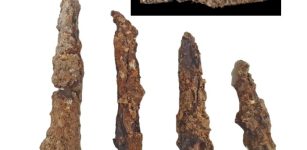 Location of Roman Ballista Machines During The Siege Of Jerusalem – Uncovered
Archaeology | Aug 17, 2022
Location of Roman Ballista Machines During The Siege Of Jerusalem – Uncovered
Archaeology | Aug 17, 2022 -
 Kussara – Ancient Lost City Of The Old Hittite Kingdom
Featured Stories | Jul 7, 2021
Kussara – Ancient Lost City Of The Old Hittite Kingdom
Featured Stories | Jul 7, 2021 -
 Palnatoke – Founder Of The Jomsvikings Brotherhood, Legendary Danish Hero And Enemy Of King Harald Bluetooth
Historical Figures | Nov 2, 2016
Palnatoke – Founder Of The Jomsvikings Brotherhood, Legendary Danish Hero And Enemy Of King Harald Bluetooth
Historical Figures | Nov 2, 2016 -
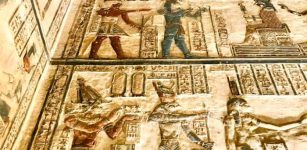 New Images From The Magnificent Dendera Temple Where Restoration Works Continue
News | Mar 15, 2022
New Images From The Magnificent Dendera Temple Where Restoration Works Continue
News | Mar 15, 2022 -
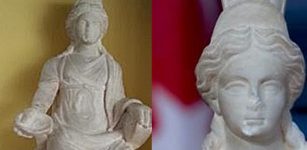 Statue Of Goddess Cybele Looted In The 1960s Returned To Turkey
Artifacts | Dec 22, 2020
Statue Of Goddess Cybele Looted In The 1960s Returned To Turkey
Artifacts | Dec 22, 2020 -
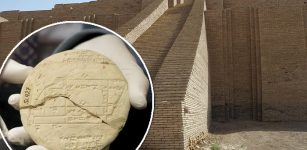 Discovered 3,700-Year-Old Clay Tablet Shows Babylonians Used Geometry Long Before Pythagoras
Archaeology | Aug 4, 2021
Discovered 3,700-Year-Old Clay Tablet Shows Babylonians Used Geometry Long Before Pythagoras
Archaeology | Aug 4, 2021 -
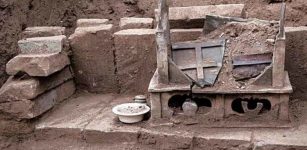 Does This Ancient Box Contain Buddha’s Cremated Remains?
Archaeology | Nov 15, 2017
Does This Ancient Box Contain Buddha’s Cremated Remains?
Archaeology | Nov 15, 2017 -
 DNA Reveals Secrets Of The Phoenician-Punic Civilization’s Success – Ancient Mediterranean Societies Were Cosmopolitan
Archaeology | Apr 24, 2025
DNA Reveals Secrets Of The Phoenician-Punic Civilization’s Success – Ancient Mediterranean Societies Were Cosmopolitan
Archaeology | Apr 24, 2025




